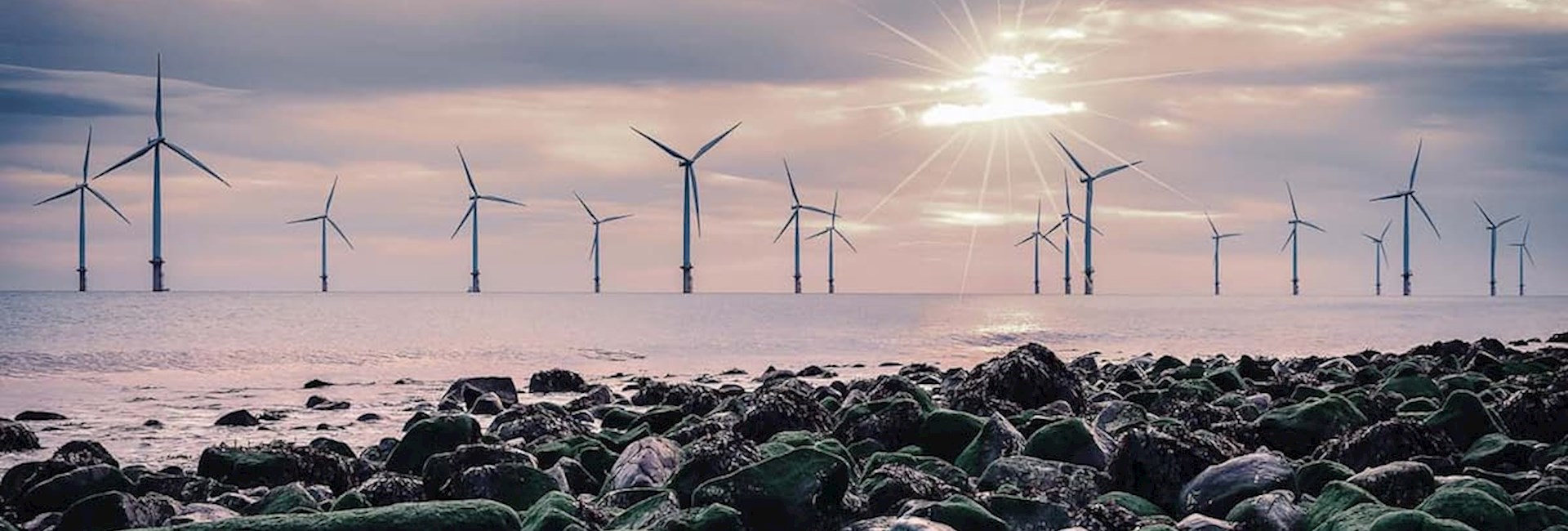How wind turbines have evolved
renewable energy

renewable energy
From ancient times when windmills were used to grind flour, through to modern day where turbines stand hundreds of metres tall and provide electricity to thousands of homes, wind turbines have undergone quite an evolution. We take a look at their journey through the years.
Humans have been harnessing the power of the wind for over two thousand years.
In the first century AD, Heron of Alexandria - mathematician, inventor and engineer - created something he called the windwheel. He used this windwheel to power a pipe organ, making "flute-like" noises.
Evidence of wind power then vanishes until the 7th or 8th century AD, when we find windmills being used to grind flour and pump water in Iran.
The next major development in our story was the discovery of electricity in the 1700s, even though it took at least another 100 years before the right mind came along.
Enter James Blyth, the world's first wind power engineer.
Blyth built the first wind turbine in Scotland in July 1887. His 10 metre high, cloth-sailed wind turbine was installed in the garden of his holiday cottage at Marykirk in Kincardineshire and was used to power the lighting in the cottage, making it the first house in the world to have its electricity supplied by wind power.
Blyth offered the surplus electricity to the people of Marykirk for lighting the main street, however, they turned down the offer as they thought electricity was "the work of the devil".
He later built a wind turbine to supply emergency power to the local asylum in Montrose, but at the time the technology was not considered to be economically viable.
Hot on Blyth's heels, American Charles Brush was building his first electricity-generating wind turbine in 1888 in Cleveland, Ohio. The turbine's diameter was 17 metres, it had 144 rotor blades made of cedar wood, and it generated about 12 kilowatts (kW) of power.
We next meet a Danish man called Poul la Cour.
Inventor, scientist, meteorologist, and teacher, la Cour was a major force in the development of what we now recognise as modern wind turbines. It was la Cour who realised that turbines with fewer blades are more efficient, and also that regulators could be used to provide a steady supply of energy.

The windmills of Neshtifan. Source: https://surfiran.com
Throughout the 20th century, individuals and companies around the world developed the technology to a utility-scale level.
The pace of development has been accelerating since the 1970s, thanks to a combination of material science, engineering and government incentives. The first windfarms were built, providing electricity to thousands of homes.
In the 1980s the Danes installed the first offshore wind turbines, starting the industry which now dominates the renewable energy world.
Turbines themselves have grown in size and efficiency, as you will see in the diagrams below.
You can read a very detailed timeline of events here.
This depends on a few things, but mainly if the turbine will be onshore or offshore.
With the added challenges and costs of the logistics, offshore turbines cost significantly more than onshore turbines.
Costs are worked out on a ratio, measuring the amount of capital expenditure (CAPEX) to generate 1 megawatt (MW).
The average value of the actual capex costs reported for onshore wind farms completed in 2016-19 was AUD $2.95 million per MW; for offshore wind it was AUD $8.23 million per MW (including transmission) or AUD $7.31 million if the very expensive Hywind project is excluded. [Source]
One way to look at all the costs involved in a comparative way is called levelised cost of energy (LCOE) which you can read about here: [Source]
For over 25 years, Brunel has worked with innovators and leaders from Australia's resource and power generation industries to deliver both small and large-scale projects. Speak with our renewable energy experts today and discover how Brunel can help meet your personnel and project needs.